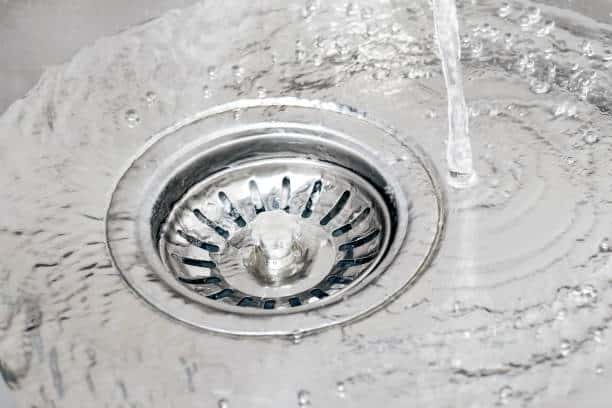Is your kitchen or bathroom sink giving off a foul odour? Don’t worry, you’re not the only one! A smelly sink drain is a frequent problem, and although it can be annoying, the great news is that it’s often something you can resolve on your own with just a few easy steps.
Plus, if you ever need help, licensed plumbers are always available to help. But for now, let’s dive into how to clean a smelly sink drain and get things back to normal.
Why Does My Sink Drain Smell?
Before we explore the solution, it’s essential to understand the reasons behind your sink drain’s unpleasant odour. There are a few common culprits:
- Food and Grease Buildup: In kitchen sinks, food particles, grease, and soap scum can easily accumulate in the drainpipe. Over time, these materials break down, causing unpleasant odours.
- Mould and Mildew: A moist and warm environment provides ideal conditions for the growth of mould and mildew. If water is lingering in your pipes, it can start to smell funky.
- Clogged Drains: Even a small obstruction can cause water to pool, resulting in unpleasant smells. This is particularly frequent in bathroom sinks, where toothpaste, hair, and soap tend to build up.
- Sewer Gas: In some cases, a smelly sink drain could indicate a more serious problem, like a broken or dried-out trap. If that’s the case, it’s advisable to reach out to a licensed plumber.
Now that we understand the cause of the odour, let’s tackle cleaning your smelly sink drain!
Step 1: Gather Your Materials
Before starting, ensure you have all the necessary items prepared. For this cleaning process, you’ll need:
- Baking soda (about 1 cup)
- White vinegar (1-2 cups)
- Boiling water (about 2 litres)
- A plunger (optional for stubborn clogs)
- Dish soap (for grease)
- A small brush (like an old toothbrush)
- Rubber gloves (optional but helpful)
Step 2: Clear Any Visible Debris
The initial step is to remove any visible debris from the drain. If you have a sink strainer, remove it and clean it thoroughly. If you don’t have a strainer, you can use your hands (wear gloves if you prefer) to remove any food particles, hair, or soap buildup.
Step 3: Boiling Water to the Rescue
Next, carefully pour boiling water into the drain. The heat will assist in breaking down grease and soap scum that may have accumulated on the pipes. This method is especially useful in kitchen sinks, where grease buildup is common.
Let the water sit for a few minutes, and if the clog remains, you may need to repeat the process.
Step 4: The Power of Baking Soda and Vinegar
Now, it’s time to use the dynamic duo: baking soda and vinegar. Here’s how to do it:
- Add Baking Soda: Pour roughly 1 cup of baking soda directly into the drain and let it sit for about 5 minutes.
- Add Vinegar: Then, pour 1-2 cups of white vinegar down the drain. You’ll see the mixture start to bubble and fizz—that’s the baking soda and vinegar working together to break down any buildup inside the pipes.
- Allow It to Rest: Let the solution remain in the drain for about 15-20 minutes. The bubbling action will help loosen stubborn gunk and eliminate odours.
- Flush with Boiling Water: Once the waiting time is over, flush the drain with another round of boiling water. This will assist in clearing any remaining debris and leave your drain smelling fresh.
Step 5: Scrub the Drain
If the smell persists or if you see more buildup around the drain, it’s time to grab a small brush (like an old toothbrush) to scrub the area. Gently scrub around the edges of the drain and the underside of the sink where grime can accumulate. This will help ensure your drain is clean and free from any lingering odours.
Step 6: Dealing with Persistent Smells
Sometimes, a smelly sink drain can be tricky to clean, especially if there’s a more serious issue like mould, mildew, or a stubborn clog. If your drain is still smelly after trying the steps above, you might need to take additional action.
- Try a Plunger: If you have a stubborn clog, use a plunger to loosen it. Position the plunger over the drain and push it up and down multiple times. This can help clear any blockages that might be causing the smell.
- Try a Store-Bought Drain Cleaner: For tough clogs, you may want to use a commercial drain cleaner. Be sure to closely adhere to the manufacturer’s instructions.
- Call a Licensed Plumber: If the smell still doesn’t go away, it may indicate a more serious problem, like a broken pipe or a venting issue. In this situation, it’s best to contact a licensed plumber to assess and resolve the issue.
Step 7: Stop Odors from Returning
After you’ve successfully cleaned your sink drain, it’s a great idea to take measures to prevent odours from coming back. Here are a few helpful tips:
- Run Hot Water Regularly: After each use, run hot water down your drain to flush away food particles and grease.
- Use a Drain Strainer: Install a filter in the drain to catch food particles and hair before they can go down the pipe.
- Avoid Pouring Grease Down the Drain: Never pour grease, oil, or fat into the kitchen sink, as these substances can build up rapidly and cause bad odours.
- Monthly Drain Cleaning: To maintain a fresh-smelling sink, make it a routine to clean your drains every month with a mixture of baking soda and vinegar.
When to Contact a Licensed Plumber
If you’ve followed all the steps and the smell persists, it might be time to get in touch with a professional plumber. A licensed plumber can inspect your pipes for issues like blockages, broken traps, or even more serious problems like a sewer backup. They have the knowledge and tools to accurately diagnose and resolve the issue efficiently and safely.
Dealing with a smelly sink drain doesn’t have to be challenging. By taking the proper steps, you can remove the odour in no time. Whether you’re tackling the issue yourself or reaching out to a licensed plumber for help, a fresh-smelling drain is within your reach!








